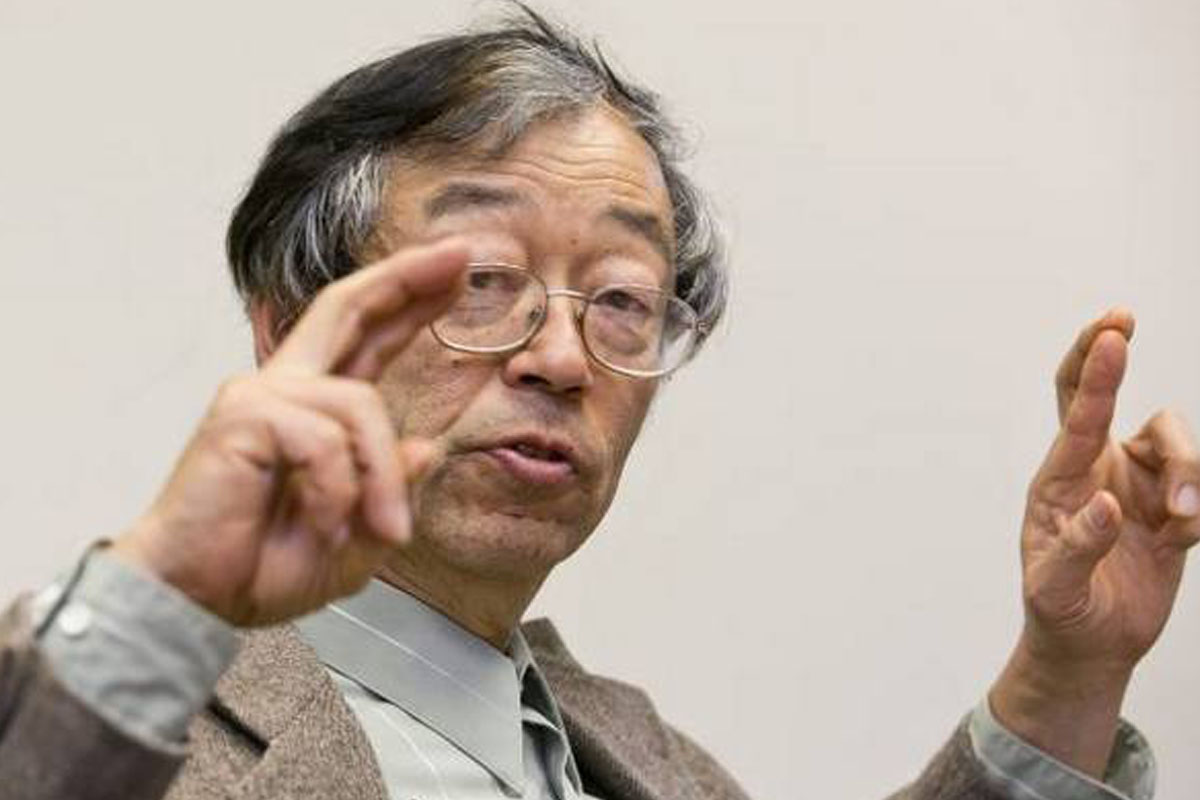Crypto.com Receives Regulatory Approval for Trading in Dubai
Crypto.com has received full operational approval from Dubai’s VARA, becoming the first permitted exchange in the UAE.

In 2007, the world entered what has become retroactively titled as ‘The Great Recession’ – where falling housing-related assets contributed to a global financial crisis, which either crippled or toppled many of the world’s largest financial institutions. One year later, in 2008, a paper entitled ‘Bitcoin: A Peer-to-Peer Electronic Cash System‘ was passed around a cryptography mailing list – written by one Satoshi Nakamoto.
In the near-ten years since Bitcoin’s debut on the world stage, pundits around the world have speculated on the identity that underpins the pseudonym ‘Satoshi Nakamoto’ – hinting that one figure (or several) may have authored the white paper that became the genesis of blockchain technology and the wider cryptocurrency ecosystem.
Still, ten years later, nobody has been able to conclusively – nor publicly – prove who Satoshi Nakamoto might be.
Bitcoin is not the first attempt at forming a digital currency, but is the most successful.
CyberCash, E-Gold, NetCash and other digital currency projects have all came before Bitcoin – however, all of these systems supported a centralized authority and were mostly written off as scams.
In the early 90s, an online collective of enthusiasts called the ‘cypherpunks’ met to discuss topics including mathematics, cryptography, computer programming, politics, and philosophy.
The cypherpunks‘ philosophy dictated that the world may be both functional with little-to-no government intervention, and instead informed the view that online privacy and cryptography may underpin trust in relationships between parties.
Bitcoin, as a currency, has often been labeled as a product of libertarian beliefs thanks to the fact that it is capable of operating outside of the ambit of governments and regulators.
Indeed, Bitcoin uses cryptography and mathematical proof to create a decentralized currency system where there is no central authority – a system aligned with the cypherpunks’ beliefs.
Though no party has ever successfully uncovered the identity of Satoshi Nakamoto, several popular theories have prevailed that have linked figures involved in cryptography, mathematics, and computer programming with the Bitcoin white paper.

While Nick Szabo may or may not be Satoshi Nakamoto, the decentralized currency enthusiast is frequently thought to have been a helping hand in the creation of Bitcoin thanks to his prior involvement in developing ‘Bit Gold‘ – a digital currency that predates Bitcoin.
Notably, Bit Gold is thought to have been one of the earliest conceptual predecessors to Bitcoin, given the fact that network participants would leverage computing power to solve cryptographic puzzles where each puzzle solution would become part of the next challenge.
Szabo has frequently denied his involvement in developing Bitcoin, and has subsequently denied that he is Satoshi Nakamoto.

A curious case of ‘if the shoe fits’, Californian resident Dorian Prentice Satoshi Nakamoto has been thought to have been the author behind the Bitcoin white paper.
Dorian Prentice Satoshi Nakamoto, trained as a physicist at Cal Poly University, was first tipped as the author of Bitcoin’s white paper by Newsweek in 2014. Citing his scholarly background and libertarian ideology, journalist Leah McGrath Goodman contacted the academic to discuss his involvement in Bitcoin – to which Prentice responded “I am no longer involved in that and I cannot discuss it. It’s been turned over to other people. They are in charge of it now. I no longer have any connection.”
Dorian Prentice Satoshi Nakamoto later retracted his claims, elaborating that he had misunderstood the interview question to pertain to his work as a military contractor. In the years since, the academic has continually refuted notions that he wrote the Bitcoin white paper.

Born in May of 1956, Hal Finney was a cryptographer and computer scientist who was an early cypherpunk who was active on online forums and published several remailers.
Finney, notably, was the first Bitcoin recipient – having received a payment directly from Satoshi Nakamoto.
Given his involvement in the cypherpunks’ activities, his libertarian views, computer programming background and association with Satoshi Nakamoto, online spectators have frequently commented that Finney may well have been the anonymous Bitcoin author himself.
Finney, who was diagnosed with amyotrophic lateral sclerosis (ALS), ultimately passed away in 2014. Throughout the course of his later life, the computer scientist ardently refuted notions that he was, in fact, Satoshi Nakamoto.
Finney’s work has ultimately led others to believe that his connections to Dorian Prentice Satoshi Nakamoto (who he lived just streets away from) and his correspondence with Nick Szabo may indicate a wider involvement with Bitcoin than first assumed.

Born in October of 1970, Craig Wright is an Australian computer scientist. Though the subject of criticism, Wright has previously claimed to have been a part of the development team that created Bitcoin.
Notably, online media have often posited that Wright is Satoshi Nakamoto himself – a claim which the academic has done little to dispute.
In November of 2015, an anonymous source contacted popular technology news outlet Gizmodo claiming that Wright was Nakamoto, and that the email author had worked for him.
News publication Wired later published a story claiming that Wright was the hand behind the Bitcoin white paper, leading Australian authorities to raid his private home.
Wright went on to delete his public internet accounts and resurface in 2016, where he claimed to be Satoshi Nakamoto. Ultimately, however, Wright chose to retract his statement and to date has not offered public proof of his involvement in authoring the Bitcoin white paper.

Dave Kleiman, born in 1967, was a forensic computer investigator and author. Following his death in 2013, the author’s estate has claimed that he was fundamental to the creation of Bitcoin.
Kleiman’s name first truly reached headlines earlier this year, where a pending lawsuit against Craig Wright describes that both men reportedly worked together to furnish Bitcoin into existence.
Court documents allege the two men collaborated from March of 2008 to develop the Bitcoin network. Following its launch, the two later supposedly sent each other Bitcoin transactions which were recorded on the blockchain.
Following his passing, Dave Kleiman’s brother – Ira Kleiman – elected to bring the lawsuit to bear against Wright, claiming that Dave Kleiman had informed him that he “might have left a legacy in the form of bitcoins and codes on hard drives held by the estate”.
Found after Kleiman’s death, an unfinished draft of a trust contract supposedly revealed that Wright had entrusted Kleiman with a sum of 1.1 million BTC in 2011, which Kleiman would return at a later date.
The funds were reportedly stored on a heavy-duty USB drive which Dave Kleiman kept on his person at all times. Ira Kleiman reportedly now owns the drive, but might not be able to access the contents given the fact that the late Kleiman apparently encrypted its contents with a proprietary cipher.
While court papers do not reveal either Craig Wright or Dave Kleiman as Satoshi Nakamoto, they do not that “For reasons not yet completely clear, they chose to keep their involvement in Bitcoin hidden from most of their family and friends. It is undeniable, however, that Craig and Dave were involved in Bitcoin from its inception and that they both accumulated a vast wealth of bitcoins from 2009 through 2013”.
Subsequently, the impending legal tussle centers around 1.1 million BTC (which translated to approximately $10 billion USD at the time), as well as including compensation for the claims of intellectual property.
Wright has previously confirmed Dave Kleiman’s involvement in authoring the Bitcoin white paper – leaving many to suspect that the cryptographer, or his brother, may have been Satoshi Nakamoto.
‘Satoshi Nakamoto’ has been granted with the favor of a following who have lauded the anonymous author’s work on the Bitcoin white paper and the conceptualization of a decentralized monetary system. However, that writer’s decision to remain anonymous instead may have gifted Bitcoin with the greatest asset possible.
Thanks to its lack of a visible developer, author, or even advertiser, Bitcoin is effectively decentralized from the influence of its creator.
Without a clear figurehead, Bitcoin proceeds by the will of its community alone – an attribute and detriment which many have cited as the factor that empowers its existence in the first instance, and also wrenches its developers apart as scaling concerns and other debates mount.
Crypto.com has received full operational approval from Dubai’s VARA, becoming the first permitted exchange in the UAE.
Nigerian court rejected Binance executive Tigran Gambaryan’s defence argument and ruled that he acted as the exchange’s representative.
The Bank of England and the UK’s financial regulator, the FCA, aim for the inaugural group of applicants to join the DSS by autumn 2024.
Ahead of parliamentary elections South Korea’s political parties are pledging crypto-related incentives to attract voters.